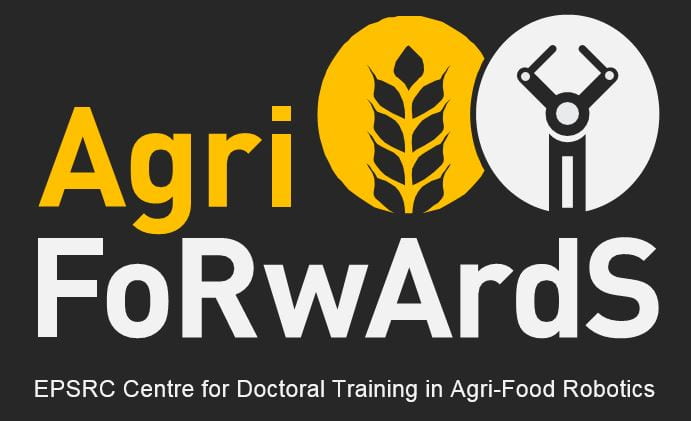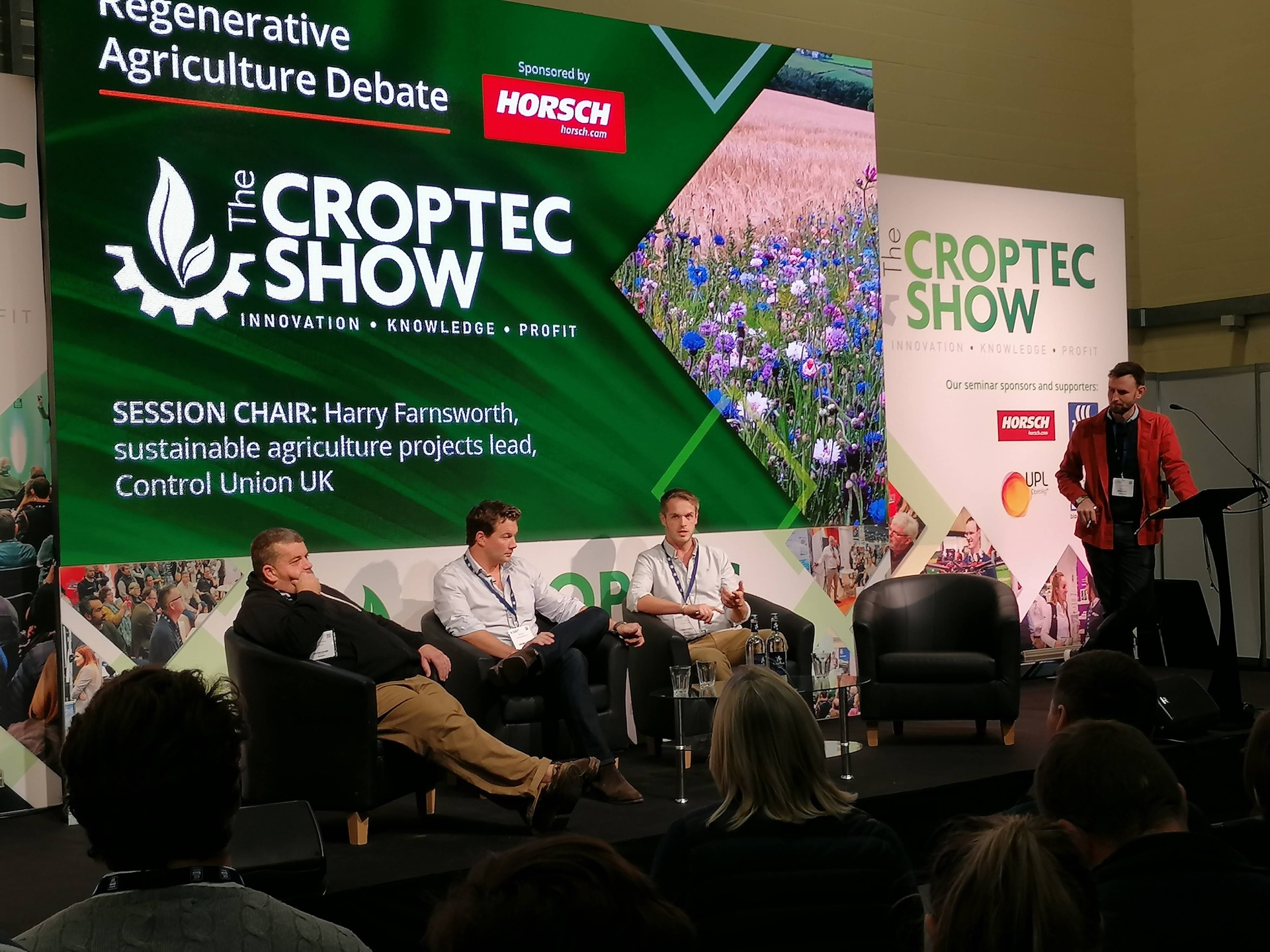The Croptec Show is an annual event which takes place in late November. The show focuses on bringing together both businesses and individuals from across the agricultural industry to discuss current challenges and display the cutting edge in agricultural technology and innovation.
Two AgriFoRwArdS CDT students, James Bennett, of cohort 3 and Bradley Hurst, of cohort 2 share their experiences of this years exhibition and what they took away from it.
Who was there?
James: “There was a wide range of technology exhibited at the event including spray nozzles and technologies, seeding implements, chemicals, data collection, crop breeding, mapping and agronomy. A few noteworthy exhibitors I spoke to were: Yara and their N-sensor for real-time variable rate application of Nitrogen; Omnia who offer precision agronomy services using a variety of data collection and analysis methods; Sencrop providing on-farm weather stations and associated insights; and Fendt, a manufacturer I’m especially a fan of!”
Bradley: “The show had a wide range of exhibitors from both businesses and institutes focusing on soil health, agricultural sustainability, safety, nutrition, business, and technology aiming to present products and services, raise awareness and recruited into the industry.”
Soil, soil, soil
James: “Of particular interest were the seminar talks on soil health, crop nutrition and the regenerative agriculture debate. What did they all talk about? Soil. Regen ag and soil are almost synonymous; the central theme of regen ag is to adopt practices that build soil heath, in turn leading to a healthier ecosystem, crops and livestock. There seemed to be a lot of energy about this from across the event with many farmers keen to see how they could apply these practices to their own farms. With the increasing environmental pressures of late, it’s great that we’re looking to nature for help and trusting in its ways to produce the food we need to survive.”
Bradley: “A significant amount of the event focused on soil nutrition and health care with the solutions on offer being developed in a large part from chemical and biological engineering. From a robotics perspective the presence was a little more nuanced, with only ARWAC ltd presenting a fully robotic platform at the event, though the URKI had similar technologies on display as they presented opportunities for funding with an aim to push the agricultural sector towards precision agriculture for the purposes of improved productivity, and impact on the environment. Other exhibitors presented solutions in line with the field of agri robotics such as precision spraying solutions, data collection, large scale field scanning using drones and retrofitting existing agricultural technology with the latest sensors and autonomous solutions.”
What does this mean for Agri-robotics?
James: “Robotics was mentioned a few times but not a lot and I found myself asking how robotics fit into everything I had heard. Two things stood out to me. Firstly, every talk said that on-farm measurements were important both for benchmarking and to integrate into decision making. Consistent measurement, big datasets and analysis are well-suited to robotics. The other regarded regenerative agriculture. There’s a general ideology of machines doing less and nature doing more which at first glance might be a threat to agri-robots and after all it’s important not to make robots for robots’ sake. However, there was an emphasis on using the right processes rather than using products to fix problems. So if our robots uphold nature’s natural processes, hopefully there is a great opportunity for agri-robotics in the arable industry.”
Bradley: “I found that though agri robots where not so prominent at the event, the approach taken in the development of agri robotics is very much in line with the direction of the industry and autonomous technologies and solutions being currently adopted by industry are further evidence of this. Chemical Company Yara presented sensor solutions for the strategic spraying of crops, whilst agricultural machinery manufacturer Graford presented a rotating disc hoe which makes use of machine vision and mechanical methods to agitate the soil and remove weeds around structured crop rows eliminating the need for spraying chemicals at all. The solutions serve as just two examples of the industries move towards targeted and precision agriculture.”
Thank you to James and Bradley for taking the time to share their experiences of this event. Attending activities such as this is critical for gaining wider awareness of the challenges at hand and how agri-technology can best be applied.

